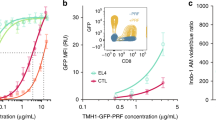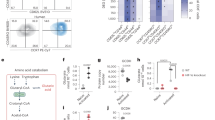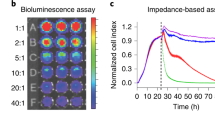Abstract
THE mechanism by which T lymphocytes kill tumour cells is unknown1. The killing is more rapid than reported for lymphotoxin2. Among possible mechanisms are the involvement of complement components3 or phospholipase A, which could generate lysolecithin in the target cell membrane. To test these possibilities we have examined the rates of release from tumour cells of markers of high and low molecular weight and the effects of nonpenetrating solutes. If killing involves disruption of the structure of the cell membrane, for example by lysolecithin, simultaneous release of markers and no protection by macromolecular solutes would be expected. If lysis is osmotic, markers of low molecular weight should be released before those of high molecular weight and nonpenetrating solutes should protect against the lysis by counterbalancing the intracellular osmotic pressure. In the case of complement lysis, small macromolecules of molecular weight less than 40,000, which penetrate through complement lesions, do not inhibit lysis, whereas those of molecular weight above 40,000 protect4.
This is a preview of subscription content, access via your institution
Access options
Subscribe to this journal
Receive 51 print issues and online access
$199.00 per year
only $3.90 per issue
Buy this article
- Purchase on Springer Link
- Instant access to full article PDF
Prices may be subject to local taxes which are calculated during checkout
Similar content being viewed by others
References
Cerottini, J. C., and Brunner, K. T., Adv. Immun., 18, 67–132 (1974).
David, J. R., and David, R. R., Progr. Allergy, 16, 300–449 (1972).
Perlmann, P., Perlmann, H., Müller-Eberhard, H. J., and Manni, J. A., Science, 163, 937–939 (1969).
Sears, D. A., Weed, R. I., and Swisher, S. N., J. clin. Invest., 43, 975–985 (1964).
Henney, C. S., J. Immun., 110, 73–84 (1973).
Martz, E., and Benacerraf, B., in Schering Symposium on Immunopathology (Cavtat, Yugoslavia) 37–46 (1973).
Ferluga, J., Asherson, G. L., and Becker, E. L., Immunology, 23, 577–590 (1972).
Cerottini, J.-C., and Brunner, K. T., Nature new Biol., 237, 272–273 (1972).
Henney, C. S., and Liechtenstein, L. M., J. Immun., 107, 610–612 (1971).
Strom, T. B., Deisseroth, A., Morganroth, J., Carpenter, B., and Merrill, J. P., Proc. natn. Acad. Sci. U.S.A., 69, 2995–2999 (1972).
Johnson, G. S., Morgan, W. D., and Pastan, I., Nature, 235, 54–56 (1972).
Martz, E., and Benacerraf, B., J. Immun., 111, 1538–1545 (1973).
Koren, H. S., Ax, W., and Freund-Moelbert, E., Eur. J. Immun., 3, 32–37 (1973).
Sellin, D., Wallach, D. F. H., and Fischer, H., Eur. J. Immun., 1, 453–458 (1971).
Hülser, D. F., and Peters, J. H., Expl Cell Res., 74, 319–326 (1972).
Holm, G., and Perlmann, P., J. exp. Med., 125, 721–736 (1967).
Gilula, N. B., Reeves, O. R., and Steinbach, A., Nature, 235, 262–265 (1972).
Taylor, R. B., Duffus, W. P. H., Raff, M. C., and DePetris, S., Nature new Biol., 233, 225–229 (1971).
Author information
Authors and Affiliations
Rights and permissions
About this article
Cite this article
FERLUGA, J., ALLISON, A. Observations on the mechanism by which T-lymphocytes exert cytotoxic effects. Nature 250, 673–675 (1974). https://doi.org/10.1038/250673a0
Received:
Revised:
Issue Date:
DOI: https://doi.org/10.1038/250673a0
This article is cited by
-
A fluorescence study on the mobility of surface antigens of untreated tumor cells and of tumor cells undergoing cell-mediated lysis
Virchows Archiv B Cell Pathology Including Molecular Pathology (1981)
Comments
By submitting a comment you agree to abide by our Terms and Community Guidelines. If you find something abusive or that does not comply with our terms or guidelines please flag it as inappropriate.



